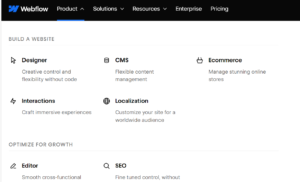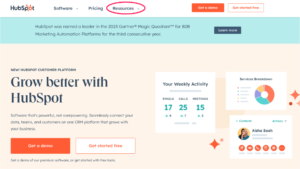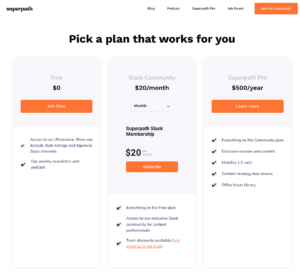Membership retention is a big deal. Get it right and you’ll have a solid business with repeat customers who love you. Fail to retain your members and you’ll struggle to realize the growth you dream about.
What does it take to master membership retention?
Lots.
There are complex strategies and tactics and some that are much easier but just as effective. This guide is all about the easier and effective strategies and tactics.
You’ll find 10 ways to improve your membership program for longer membership lifecycles, and happier members.
The strategies and tactics listed below have been grouped into three categories: design, content, and communication. Each strategy or tactic also includes basic steps or insights you can use to get started.
Design
Designing a winning membership service isn’t just about the front end. Sure, a beautiful website with mobile responsive design is a must, but there’s also the matter of creating the right system for members to thrive. Here are three ways to design a stronger membership service.
1. Design or Tweak Your Member Onboarding Process
Onboarding is a quintessential experience for new members. It’s akin to a welcome party at a new place. And unless you are an extrovert, most people, customers included, struggle to fit in.
If you haven’t created an onboarding process or want to improve yours, your goal is to start with questions.
Identify why customers have chosen your solution through direct feedback. This can be in the form of interviews or surveys. Here are four questions to ask your customers that will spearhead your onboarding process development:
- What problems are you trying to solve with [insert your product or service]?
- What pain points do you experience as you attempt to solve your problem?
- What does the ideal outcome look like for you?
- What information do you feel will help you best realize your ideal outcome?
While not a long list, answers to these questions will paint a clear picture of how you can best help your new and existing customers achieve their goals. These questions can and should also be used for any new features or products, too, because they easily identify what matters most to your customer and how to meet their needs.
Next, take these answers and arrange them in order if possible. What comes first? What can be done concurrently? What information does your customer need when addressing each phase related to each question?
Pro tip: You’ll find that by keeping a problem-solving mindset, your onboarding process virtually creates itself.
2. Optimize Website and Mobile User Experience
An easy-to-navigate site creates pleasurable brand experiences. And as membership retention goes, the easier it is to create consistently pleasurable website experiences, the less likely it is that your members will want to leave. Research shows that 88% of website visitors choose not to return if they had a bad user experience.
Can you imagine losing out on the opportunity to onboard just 10% of the visitors lost to a bad user experience?
If you’ve been looking for ways to improve your site experience, here are three simple, but effective steps to take:
Less is more: Streamline your site to a point where it appears clean, the core messaging stands out and is easy to read and understand. This can be achieved by using whitespace and color contrasting, just like Toggle does below.

Source: Togggle
Clean up your menu: Navigation menus can and do go wrong. Often, brands struggle to identify where to list specific pages, whether a feature needs its own page, and how to structure it all. The simplest and most effective solution is to focus on what your visitors need to achieve.
Order your pages by member objectives and ensure that the content you provide meets member expectations. Clicking on Webflow’s Product menu link shows you how to achieve specific goals, including building a website, optimizing for growth, and scaling your business.

Source: Webflow
Make your resource section prominent: When people can’t find what they want, they bounce off of your site. To prevent this, include a resource section that’s easy to spot and use.
HubSpot has a large website, however, they understand the value of education. Note how access to their resource section is prominently displayed in their menu.

Source: HubSpot
Make It Mobile Friendly: Most people surf the web via mobile phones today. Research also shows that these numbers are only going to grow. It’s common and convenient, and if you want to have the best chance of meeting your members’ needs on the go, your membership site has to be responsive too.

Source: Bank My Cell
3. Segment and Target Members
Depending on your membership service and business, segmentation may be a lever that you can pull to improve retention. Research shows that companies that practice personalization earn 40% more revenue than the average competitor in their market.
That’s because most businesses serve more than one type of customer. And the distinction between your customers may seem negligible, however, it could make a massive difference.
Targeted messaging, offers that convert, and longer membership lifespans are what you stand to gain if you know exactly which segments your members fall into.
To identify your segments, lean into target market research. Here, you want to spot variances in the following areas:
- Member interests: Do some members typically gravitate toward certain topics and events while others don’t?
- Member actions: Do some members use some services or use certain features while others don’t?
- Purchasing power: Can you spot trends that hint at a subgroup of your client base that buys certain products where another does not?
Note: While this isn’t an exhaustive list of areas to explore, it will help you identify behaviors that segments of members associate with. Once you have an idea of what your segments gravitate towards, you are able to create tailored experiences for them.
Communication
What you communicate determines whether your members will come back for more, but it’s not just about posting stuff daily. These tactics will ensure that your community sees your stuff as valuable and hard-to-want-to-miss.
4. Keep the Conversation Going on Social Media
Memberships are, in essence, clear requests for help to solve a problem. Gym memberships help people become fitter and healthier. Professional memberships help people improve their skills, grow larger networks with like-minded people, and improve their careers.
And so, it’s logical that engaging in conversations with your members will help them feel more open to sharing and even more motivated to want to go after their goals. There’s research to support the value of connecting with people, too.
A 2022 study showed that engaging in conversations with strangers can lead to an improved mood. It also lowers psychological barriers and fears.
Taking to social media to post content that continues the conversation about your members’ journey is a smart move.
Zen Business regularly posts content that motivates its members to persist in building their businesses, like this post on what success really looks like:

Source: Zenbusiness
If you’ve struggled with joining or starting conversations with your members, these tips will help:
Think value: Members want to solve problems and the more advice, direction or guidance you can offer is always welcome.
Leave the door open: Being the kind of person who’s always available to help goes a long way. It becomes a value people associate with your brand, so much so that people experience what Dr. Robert Cialdini describes as the “reciprocity principle”, a need to return the favor. In this case, people are more likely to want to continue membership if they experience all the support, they need to reach their goals.
5. Make Feedback a Cornerstone
There’s a theme you’ve likely picked up in this guide. It’s all about your members and what they need because, without them, you don’t have a membership service.
Feedback is a smart and easy way to take the pulse of your members. Research shows that as much as 94% of consumers attest that a bad review has convinced them to avoid a business. Timely feedback can help address any negative sentiment about your brand by improving retention.
![]()
Source: Review Trackers
It can also lead to new products and services that your customers are ready and willing to invest in. Feedback can be gathered in a host of ways, from quizzes and surveys to in-person or virtual interviews and online events.
Not sure what to get feedback on? It’s best to start with experience and here are questions you can ask that will get valuable insight:
- What is one challenge you are currently facing that you wish our service addressed?
- Why does that challenge matter to you?
- What would an ideal outcome look like if you could address this challenge?
Like our questions used to design or tweak your onboarding process, these are all tied back to helping your members achieve a goal. These questions can also be tied to specific features your product may offer and how well they meet a customer’s needs.
6. Show Up in Their Inboxes Regularly
There’s little more valuable than constant communication with your members. While some may feel that it amounts to spam, there are others who would miss your communications if they weren’t sent all because people have different drivers for being members.
The upside of regular communication is that it keeps your brand top of mind because that’s a feat on its own today. Your competition isn’t letting up and they want to grow just as much, if not more than you do.
When done right, regular communication can be lucrative. Take email. It can produce as much as $72 in ROI for every dollar you spend.
But just any idea about anything won’t do. Create communications that resonate with your members.
You’ve learned that focusing on problems and challenges helps guide your content. Here are three other ways to produce regular email messaging that your members want to receive:
Make It timely: Share content that’s trending and put your spin on it. But don’t force angles. Look for lessons, insights, and value you can easily translate for your members.
Schedule It: Establish times, days, or dates when you communicate with your audience. This seemingly small detail sets the expectation for communication with your members. And when they are used to receiving your stuff because they enjoy it, they are less likely to want to want to jump ship.
It’s all about your audience: As you engage, remember to tie everything back to value for your audience. While not the most endearing idea about the human condition, it still holds true that people are mostly interested in what’s in it for them. Focus on that. Give members stuff that makes them feel like you care about them and their journey.
7. Find out Why Members Leave
It’s never easy to lose a customer but there are valuable lessons to be learned when you do. In some cases, there’s also the opportunity to win that customer back because you’ve taken the time to understand why they chose to leave.
As part of your member journey, roll up your sleeves and develop an exit interview for anyone who leaves.
Questions you should ask must be around ways that your service can be improved. Most customers are more likely to share gripes, but many will also share constructive criticism you can use to build a better membership experience.
Try these questions in your exit survey:
- What was your reason for choosing not to continue with your membership?
- What do you feel we could do to improve your experience as a member?
- If we could address what’s missing, would you be interested in rejoining our program?
Pro tip: Use open questions as much as possible. They will always make it easier for members to share what’s on their minds and hearts.
Content
Content is the lifeblood of any successful membership service. Take Superpath, a community designed for content marketers. For $20/mo, you get access to a collection of Slack channels, including exclusive community content, and team discounts.
And if you upgrade to the Superpath Pro plan, you get to be a part of content strategy tear downs, can dive into its office hours library, and qualify for a monthly 1:1 call with a content marketing pro.

Source: Superpath
How do you use content to fuel your membership retention? Try these three tactics.
8. Create Supporting Content
“Supporting content”, as vague as that might sound, is really easy to produce when you’ve got your ducks in a row. Like all other content you produce, it should be based on ideas that move your audience.
Superpath send a weekly email to content marketers. It includes a weekly podcast guest who’s also a content marketing professional and highlights conversations you may have missed in Slack. These emails include content that acts as a perfect hook to pull members back into the community to learn more and engage — supporting the overall goal of the business which is to keep members engaged.
And to figure out what moves your audience, you need to know who your audience is. This isn’t where we’ll dive into personas, because if you’ve been floating about the digital marketing sphere for any amount of time, you know how important target market research is.
Instead, here are simple and actionable tactics for producing engaging content:
Set clear objectives: Define the goals of your content. Clear objectives help in crafting focused content Are you aiming to educate, entertain, inspire, or inform?
Make value a pillar: Ensure that your content provides value to your membership community. Solve problems, answer questions, or offer insights relevant to their interests.
Tell stories: Narratives and personal anecdotes can be powerful. Use them to create emotional connections and make content relatable.
Diversify content formats: Mix up your content formats. Use text, images, videos, infographics, webinars, podcasts, and more to cater to different preferences. Encourage participation through polls, quizzes, surveys, and discussions, too. Interactivity fosters a sense of community.
Leverage visual appeal: Use eye-catching visuals and graphics. Aesthetically pleasing content is more likely to grab attention, especially due to the amount of content pulling your audience’s attention today.
Be concise: Treat your content like an important conversation where you can only use words that must absolutely be included to communicate your message. This approach sounds complex, but it’s powerful.
The secret to using the right amount of words is editing. So, draft your copy, and then give it three edits — after you’ve had a moment to let it breathe for at least an hour. This way you get to let ideas crystalize and you’ll be able to see what needs to be removed because it doesn’t strengthen your message.
9. Host Member-Exclusive Events
Well-planned events are magnets for members. They create a space for your customers to come together and gain valuable insights on how to get closer to reaching their goals. The key to creating a well-planned event starts with problems.
You’ll find that if you’ve done your research well enough, you’ll have identified ample problems and milestones that your audience wants to achieve — reasons why they became members.
Here’s how to use your insights to create an impactful event:
Focus on one big idea: You may be tempted to address all issues all at once, but don’t Identify one problem and go deep to deliver value.
A 360-degree view: Frame the problem by explaining what it is, why it happens, and when. Then address the problem by sharing how to solve it, why your approach works, and what the results look like.
Pro tip: Free giveaways are events are always welcome — and more so if they offer utility. So, if you are sharing a process on how to solve a problem, over a free guide with a summary or a workbook for members to track their progress.
10. Do Away With Buyer’s Remorse
It’s common, and while unfortunate, can be overcome. Buyer’s remorse sets in when the perceived value of your membership is lowered. This can happen when a member uses your service to achieve a specific outcome but fails to generate results. It can also happen when the service they’ve paid for doesn’t meet their expectations.
Here are two powerful ways to counter buyer’s remorse with strong messaging in your content — before members have a chance to experience it:
Showcase benefits and advantages: Lean into benefits members gain. Be sure to translate these into terms that your members are familiar with. For example, an online personal training membership service is that it can be done from anywhere, even on your smartphone.
It also comes at a lower fee compared to in-person training. Freedom to get coaching on the go is convenient and lower fees mean money back in your client’s pocket for other important things like supplements.
Use strong guarantees: Skeptical people, if not convinced of value, are more likely to suffer from buyer’s remorse. Direct marketers the world over understand this and often produce sales messaging with free trials, no-question money-back guarantees, and even 200% refunds. While these seem like potentially ruining business practices, they aren’t.
Instead, they act as trust builders by showing members that their anxiety, fear, and hesitation about committing don’t have to be a factor. By offering the chance to test drive your membership, for example, prospects feel like they are gaining more without committing.
Pro Tip: Communication is especially important in handling buyer’s remorse. You may find that members who plan to end their subscriptions need just the human touch. A connection. Guidance on how to use your membership service to achieve their goals. Creating a space where members feel comfortable sharing honest feedback will help present you with more opportunities to build a stronger subscriber base with higher retention rates.
Take Action
Don’t get overwhelmed by how much you’ve just read or try to implement everything all at once. Take your time. Test one idea out first, and see how your audience responds. Membership retention isn’t rocket science, it’s people science. Give your members what they want and you’ll find that they tend to stick around for longer.
About Author
Amir is the Head of Demand Gen at Uscreen, an all-in-one membership platform built for video creators. With Uscreen, creators can easily create paid memberships that include an on-demand video library, live streaming capabilities, and their own community space, all in their own branded site and apps.






